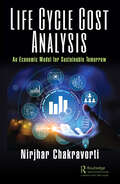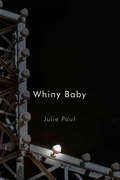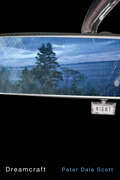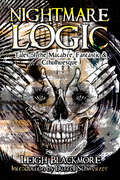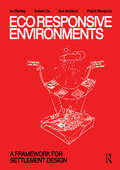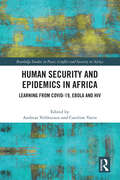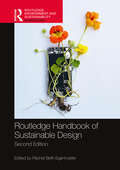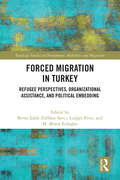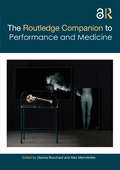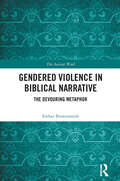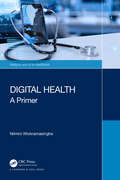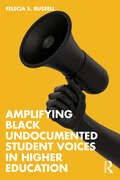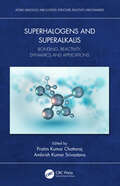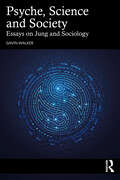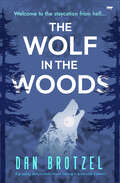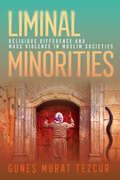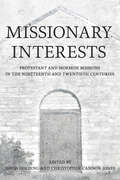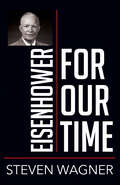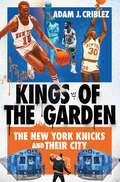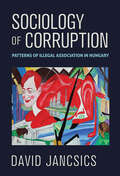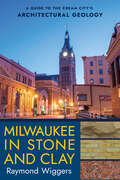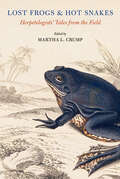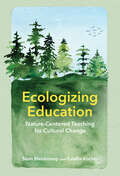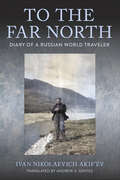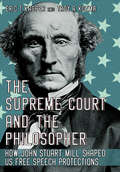- Table View
- List View
Life Cycle Cost Analysis: An Economic Model for Sustainable Tomorrow
by Nirjhar ChakravortiLife Cycle Costing (LCC) is the process of economic analysis to assess the total cost of ownership of an asset, including its cost of procurement, installation, operation, maintenance, conversion, and decommissioning. The economic approach to assess the total cost of owning an asset or facility is known as Life Cycle Cost Analysis (LCCA). LCCA is a key economic tool for business decision-making in terms of various functional requirements, such as sustainability, asset management, supply chain management, and project management. Every organization is a combination of various interrelated functions or departments. Every function has its own set of objectives and targets. Even though all functions try to achieve overall organizational objectives, in reality, they work to protect their functional interests as well. In many cases, it becomes detrimental to the health of the organization. This conflicting behavior increases when decisions are made on subjective considerations. When a company's strategy works on an objective platform, chances of conflict are reduced. LCCA can be used as a management decision tool for synchronizing functional conflicts by focusing on facts, money, and time. Life Cycle Cost Analysis: An Economic Model for Sustainable Tomorrow explains a simple, innovative model to carry out LCCA, along with a unique methodology to determine how the value of money changes over a period of time.
Whiny Baby (Hugh MacLennan Poetry Series)
by Julie PaulChomping / champing / championing / churlish / … / There’s a wolf at the door / that looks exactly like meWho is the “whiny baby” in this book? Rather than calling names or hurling insults, the candid poems in this collection most often implicate the poet herself.Expansive in form and voice, the poems in Julie Paul’s second collection offer both love letters and laments. They take us to construction sites, meadows, waiting rooms, beaches, alleys, gardens, and frozen rivers, from Montreal to Hornby Island. They ask us to live in the moment, despite the moment. Including a spirited long poem that riffs on the fairy tale “Three Billy Goats Gruff,” these poems are like old friends that at once console and confess. They blow kisses, they remember, and they celebrate the broken and the lost alongside the beautiful.At turns frank, peevish, introspective, and mischievous, the poems share sincere and intimate perspectives on the changing female body, our natural and built landscapes, and the idiosyncrasies of modern life. Whiny Baby calls on us to simultaneously examine and exult in our brief time on earth.
Dreamcraft (Hugh MacLennan Poetry Series)
by Peter Dale Scottso the long stretch of life / reveals its curvature / by those widely separated // moments when we are / brushed / by this awareness // of an other / that we do not knowIn his latest collection of poems, poet, deep state researcher, and radical medievalist Peter Dale Scott interrogates topics that have occupied his later thought and writing, such as moreness (our need, as humans, to be more than we are), minding, and enmindment (the generative synergy, engaging both hemispheres of our bicameral mind, of intellectual and spiritual enlightenment, now out of kilter).In pursuit of these themes, Scott’s voice ranges far, from engaging with poets of the past and, hopefully, the future to critiques of coercive political power, from elegies for important figures in his life – Leonard Cohen, Daniel Ellsberg, Czeslaw Milosz, and Robert Silvers – to fan letters for “minders” Chelsea Manning and Dr Christine Blasey Ford.Dreamcraft is a book that crosses distances and straddles boundaries, moving from whistleblower law to the mimetic properties of DNA, from “the entropic spread / of the drifting cosmos / after the big bang” to “the push of lawn grass / under foot.”
Nightmare Logic: Tales of the Macabre, Fantastic and Cthulhuesque
by Leigh Blackmorenightmare (n) 1. a frightening or unpleasant dream with acute fear, anxiety or other painful emotion 2 a very unpleasant experience 3 a condition, thought or experience suggestive of a nightmare in sleep logic (n) 1 the science of principles of reasoning 2. good reasoning 3. correct or reliable inference Nightmare logic 1. The inexorable horror of bad dreams 2. that which lurks unsuspected in the shadows of the waking world 3. forgotten and unacknowledged pasts rising up to claim the present 4. the twisted raison d' etre of things that should not be – but are. At the intersection of this world and others, unimaginable things can happen. With this collection of stories, Leigh Blackmore invites you to voyage with him into urban decay and otherworldly dimensions, to discover paranoia and unknown planes of existence, to experience realms of cosmic alienage, and the fantastic that lies at the heart of the real. These stories of nightmarish events, by turns eerie, haunting, deliriously disturbing, are sure to show you a darkness of your own, a world in which (perversely) you will want to stay immersed rather than awaken. Open the pages of this book and be drawn ineluctably into a labyrinth of sorcery and sex, of bizarre mind games and stranger rituals... a whirlpool of darkness... the world of NIGHTMARE LOGIC.
EcoResponsive Environments: A Framework for Settlement Design
by Ian Bentley Soham De Sue McGlynn Prachi RampuriaEcoResponsive Environments integrates our current knowledge of designing for human needs, with a deeper understanding of natural systems. The book offers both a call to action and a comprehensive yet pragmatic framework for practising the art and science of settlement design, called EcoResponsive Design.Bridging the gap between theory and generic policy on the one hand, and design for specific places and sites on the other, the book is aimed not only at the professionals involved in planning, designing and developing these places, but also the wider range of communities interested in creating better spaces for our everyday lives.EcoResponsive Design encompasses all scales, ranging from the overall form of settlements and the landscapes in which they sit, to buildings and the detailed design of public spaces. Drawing from projects, places and best practices in many different countries and contexts across the world, it demonstrates how positive changes at the local scale can be achieved for every single site, large or small. The book urges a shift in focus from individual specialisms to collaborative actions, enabling development stakeholders to negotiate a balance between short-term financial viability and longer-term environmental and social values.
Human Security and Epidemics in Africa: Learning from COVID-19, Ebola and HIV (Routledge Studies in Peace, Conflict and Security in Africa)
by Velthuizen, Edited by Andreas Caroline VarinThis book examines the impact of epidemics in Africa, exploring some of the adaptation and crisis management strategies adopted to tackle COVID-19, Ebola, and HIV-AIDS. The authors reflect on lessons learned from solving complex problems and difficult decisions made by leaders on pandemic management to shape the security environment and, thus, the well-being of people living in Africa for years to come.Drawing on cases from across the continent, the book demonstrates that, significantly, during the COVID-19 pandemic, African countries and communities frequently displayed regional solidarity, creativity in decision-making, decisiveness in dealing with corruption and opportunism, and resilience and discipline in implementation. Adopting a human security framework, the authors share their lived experiences and explore the impact of epidemics on public policy decision-making, foreign policy implementation, global relations, collaboration in the community dimension, and, ultimately, the future of socio-economic development in Africa.This book will be a welcome addition for practitioners and researchers across the fields of security studies, health management, and African studies, making an essential contribution to the security discourse in a post-COVID world.
Routledge Handbook of Sustainable Design (Routledge Environment and Sustainability Handbooks)
by Rachel Beth EgenhoeferThe Routledge Handbook of Sustainable Design considers the design, not only of artifacts, but of structures, systems, and interactions in the context of sustaining our shared planet. This revised edition introduces new and updated chapters, as well as a new section on pedagogy for sustainable design. With authors from around the world, design is positioned in context with recent crises such as global pandemics, racial reckoning, political unrest, and natural disasters. Just as design is an interdisciplinary field, the climate crisis is deeply tangled in racial justice, gender justice, global health, economics, trade, and more. Divided into six sections, it presents a holistic approach to understanding the many facets of sustainable design: Part 1: Systems and Design Part 2: Complexities of Sustainable Design Part 3: Community Engaged Design for Local and Global Diversity Part 4: Design for Sustainable Behaviors Part 5: Design Futures Part 6: Pedagogy in Design for Sustainability Arguing that design needs to restore, regenerate, and rejuvenate our planet and people, this handbook will be invaluable to researchers, students, and practitioners across all subdisciplines of design, architecture, business, energy management, visual arts, and environmental studies, among others.
Forced Migration in Turkey: Refugee Perspectives, Organizational Assistance, and Political Embedding (Routledge Studies in Development, Mobilities and Migration)
by Şafak Zülfikar Savcı, Berna Ludger Pries M. Murat ErdoğanTurkey hosts more refugees than any other country in the world, with forced migrants from Syria, Afghanistan, Pakistan, Iraq, and other countries converging, either with hopes to settle in Turkey or to continue onwards to the European Union (EU).This volume addresses the specific experiences and trajectories of forced migrants in Turkey in the context of local and national contexts and the future of EU-Turkey relations. It presents the demographics of forced migrants, the biographies and future plans of refugees, and their interactions with civil society, states, and international agencies. A focus is on organized violence and corresponding experiences in countries of origin, during transit, and at current places.Based on extensive quantitative and qualitative research, this book will be of interest to researchers and practitioners in the fields of migration, human security, and refugee studies, as well as of sociology, political sciences, and international relations.
The Routledge Companion to Performance and Medicine (Routledge Companions)
by Gianna Bouchard Alex MermikidesThe Routledge Companion to Performance and Medicine addresses the proliferation of practices that bridge performance and medicine in the contemporary moment.The scope of this book's broad range of chapters includes medicine and illness as the subject of drama and plays; the performativity of illness and the medical encounter; the roles and choreographies of the clinic; the use of theatrical techniques, such as simulation and role-play, in medical training; and modes of performance engaged in public health campaigns, health education projects and health-related activism. The book encompasses some of these diverse practices and discourses that emerge at the interface between medicine and performance, with a particular emphasis on practices of performance.This collection is a vital reference resource for scholars of contemporary performance; medical humanities; and the variety of interdisciplinary fields and debates around performance, medicine, health and their overlapping collaborations.Chapter 18 of this book is freely available as a downloadable Open Access PDF at http://www.taylorfrancis.com under a Creative Commons Attribution CC-BY 4.0 license.
Gendered Violence in Biblical Narrative: The Devouring Metaphor (The Ancient Word)
by Esther BrownsmithThis book uses three examples of violent biblical stories about women, explored through the lens of conceptual metaphor theory in relation to culinary language used within these texts, to examine wider issues of gender and sexual violence in the Hebrew Bible.Utilising the tools of conceptual metaphor theory, feminist criticism, and classic textual analysis, Brownsmith interrogates some of the most troubling biblical passages for women—neither by redeeming them nor by condemning them, but by showing how they are intrinsically shaped by the enduring metaphor of woman as food in the Hebrew Bible, ancient Near East, and beyond. The volume explores three main case studies: the Levite’s “concubine” (Judges 19); Tamar and Amnon (2 Sam 13); and the life and death of Jezebel (primarily 1 Kings 21 and 2 Kings 9). All depict violence toward a woman as perpetrated by a man, interwoven with culinary language that cues their metaphorical implications. In these sensitive but critical readings of violent tales, Brownsmith also draws on a broad range of interdisciplinary connections from Ricoeur to ancient Ugaritic epics to modern comic books. Through this approach, readers gain new insights into how the Bible shapes its narratives through conceptual metaphors, and specifically how it makes meaning out of women’s brutalized bodies.Gendered Violence in Biblical Narrative: The Devouring Metaphor is suitable for students and scholars working on gender and sexual violence in the Hebrew Bible and the ancient Near East more broadly, as well as those working on conceptual metaphor theory and feminist criticism.
Digital Health: A Primer (Analytics and AI for Healthcare)
by Nilmini WickramasingheHealthcare systems globally are grappling with how best to implement effective and efficient patient-centred care while simultaneously trying to contain runaway costs and provide high quality. This book explores the essential enabling role of digital health, taking a socio-technical perspective and looking at the key facets of technology, people and process in turn.This book examines the opportunities of key digital health components, demystifying digital health and demonstrating how to use its key precepts effectively. The book presents evidence and anecdotes from stakeholders around the world, demonstrating the global relevance and the ability of digital health to uplift and upskill care delivery as it is applied commercially. Bridging academic theory and practice, this is a functional and accessible text for all digital health stakeholders.The text introduces critical issues and is suitable reading for students, practitioners and researchers in digital health and all healthcare-related domains.
Amplifying Black Undocumented Student Voices in Higher Education
by Felecia S. RussellThis book centers a qualitative study exploring the experiences of 15 Black undocumented students and the author’s own experiences as a Black DACA (Deferred Action for Childhood Arrivals) recipient, highlighting the invisibility and lack of belonging Black undocumented students face in the undocumented community and the United States at large.Access and success within higher education for undocumented students cannot be achieved unless those implementing policies understand the full context of the community. Through both an interpretative phenomenological approach and biographical memoir, this volume makes meaning of the experiences of undocuBlack students, a group who do not often see themselves being represented in the immigrant narrative. It argues that without visibility, undocuBlack students are rarely the beneficiaries of advocacy and become targets of overcriminalization. The stories told here examine the intersection of race and identity in determining positioning within society, with the goal of contributing awareness and promoting more inclusive practices among higher education communities.This text offers an important new perspective for faculty and administrators, policymakers, upper-level undergraduate and graduate students, as well as general readers with an interest in Black and immigrant narratives and the undocumented experience as an academic subject.
Superhalogens and Superalkalis: Bonding, Reactivity, Dynamics and Applications (Atoms, Molecules, and Clusters)
by Pratim Kumar Chattaraj Ambrish Kumar SrivastavaSuperhalogens and Superalkalis is a comprehensive volume designed as the go-to resource on the exciting and evolving topics of these special classes of atomic clusters and the acid salt that results from their interactions. The book details how these substances possess not only unusual structures but also unique properties which can be exploited for various applications. Superhalogens’ strong oxidizing capacity, resulting from their high-electron affinity, leads to their applications in the design of superacids, organic superconductors, and ionic liquids. The low ionization energy of superalkalis enables them to act as strong reducing agents, making them useful in the design of superbases and alkalides. Illustrated throughout, this timely book provides an overview of the research and development on these and other aspects of superhalogen and superalkalis. Key features: Offers a basic introduction of superatoms that is accessible for readers to understand. Includes extensive study questions after each chapter. Provides a systematic presentation of the existing literature on this increasingly trending topic. Presents the latest developments in the field, offering readers state-of-art knowledge. This book is a key reference guide for graduate students, postdocs, upper-level undergraduate students, academic professionals, and researchers who are interested in this fascinating topic.
Psyche, Science and Society: Essays on Jung and Sociology
by Gavin WalkerIn this new volume, Gavin Walker attempts to open a conversation between sociology and Jungian psychology, both often overlooked by each other, through a series of wide-ranging essays. This book provides a Jungian counterpoint to the more accepted Freudian perspective in sociology by engaging with several key themes, including race, gender, urban sociology, religion and the environment. The chapters here consider methodological issues, such as how Jungian psychology might contribute to our understanding of human nature, and Jung’s – and sociology’s – complex and manylevelled relationship with anthropology. As a whole, this unique work provides an open-ended exploration of what sociology includes and excludes from its agenda, and asks how engagement with Jung might shift the centre of gravity of a heterogeneous discipline. Psyche, Science and Society will be of interest to academics and students working in the fields of analytical psychology and sociology, as well as psychoanalysis, anthropology, feminism, environmentalism, comparative religion and the history of science.
The Wolf in the Woods: A gripping dark comedy where nothing is quite as it seems
by Dan Brotzel&“A couple tries to rekindle their relationship through a romantic weekend getaway . . . but everything goes awry. . . . Dark and extremely funny.&” —Scots Magazine Struggling with their marriage, midlife empty-nesters Colleen and Andrew plan to spend a week in an isolated cottage—just the two of them. But with a landlord named Wolf who lives next door and won&’t leave them alone, the couple start to feel like there are three people in their relationship. Still, they are determined to make a valiant effort to overcome this marital crisis. However, with both of them engaging in secret communications with others, they&’re starting off on shaky ground. And with Wolf&’s behavior growing ever more unsettling, it&’s possible that leaving early would be a good idea. If only their car hadn&’t broken down . . . &“Full of cutting insights into the reality of long-term relationships but not at all short on heart-warming humour, The Wolf in the Woods is a sometimes sinister but tenderly told tale.&” —The Independent &“With characters that are all-too-relatable, The Wolf in the Woods skewers the lies we tell ourselves in order to keep going. I loved it.&” —Stephen May, author of Sell Us the Rope &“A master story-teller and observer of people and relationships. . . . Humour, suspense and unexpected twists. I could not put this book down.&” —Christy Lefteri, author of The Beekeeper of Aleppo
Liminal Minorities: Religious Difference and Mass Violence in Muslim Societies (Religion and Conflict)
by Günes Murat TezcürLiminal Minorities addresses the question of why some religious minorities provoke the ire of majoritarian groups and become targets of organized violence, even though they lack significant power and pose no political threat. Güneş Murat Tezcür argues that these faith groups are stigmatized across generations, as they lack theological recognition and social acceptance from the dominant religious group. Religious justifications of violence have a strong mobilization power when directed against liminal minorities, which makes these groups particularly vulnerable to mass violence during periods of political change.Offering the first comparative-historical study of mass atrocities against religious minorities in Muslim societies, Tezcür focuses on two case studies—the Islamic State's genocidal attacks against the Yezidis in northern Iraq in the 2010s and massacres of Alevis in Turkey in the 1970s and 1990s—while also addressing discrimination and violence against followers of the Bahá'í faith in Iran and Ahmadis in Pakistan and Indonesia. Analyzing a variety of original sources, including interviews with survivors and court documents, Tezcür reveals how religious stigmatization and political resentment motivate ordinary people to participate in mass atrocities.
Missionary Interests: Protestant and Mormon Missions of the Nineteenth and Twentieth Centuries
by Edited by David Golding and Christopher Cannon JonesIn Missionary Interests, David Golding and Christopher Cannon Jones bring together works about Protestant and Mormon missionaries in the nineteenth and twentieth centuries, charting new directions for the historical study of these zealous evangelists for their faith. Despite their sectarian differences, both groups of missionaries shared notions of dividing the world categorically along the lines of race, status, and relative exoticism, and both employed humanitarian outreach with designs to proselytize.American missionaries occupied liminal spaces: between proselytizer and proselytized, feminine and masculine, colonizer and colonized. Taken together, the chapters in Missionary Interests dismantle easy characterizations of missions and conversion and offer an overlooked juxtaposition between Mormon and Protestant missionary efforts in the nineteenth and twentieth centuries.
Eisenhower for Our Time (People for Our Time)
by Steven WagnerEisenhower for Our Time provides an introduction to the Eisenhower presidency, extracting lessons for today's world. Steven Wagner proposes that the need to maintain balance defines Eisenhower's presidency. Wagner examines a series of defining moments that were among Eisenhower's greatest challenges, some of which resulted in his greatest accomplishments: the decision to run for president, his political philosophy of the "Middle Way," the creation of a national security policy, the French Indochina War, Senator Joseph McCarthy, the Little Rock Desegregation Crisis, the Race for Space, and the famous Farewell Address. Wagner looks at Eisenhower's executive ability, leadership, decision making, and willingness to compromise, as well as the qualities of duty, integrity, and good character. The moments detailed in Eisenhower for Our Time show Eisenhower as a president intimately engaged in the decisions that defined America in his time and that apply to ours today. The President's actions place him among the most successful presidents and provide many lessons to guide us in our time and in the future.
Kings of the Garden: The New York Knicks and Their City
by Adam J. CriblezIn Kings of the Garden, Adam J. Criblez traces the fall and rise of the New York Knicks between the 1973, the year they won their last NBA championship, and 1985, when the organization drafted Patrick Ewing and gave their fans hope after a decade of frustrations. During these years, the teams led by Walt Frazier, Earl Monroe, Bob McAdoo, Spencer Haywood, and Bernard King never achieved tremendous on-court success, and their struggles mirrored those facing New York City over the same span. In the mid-seventies, as the Knicks lost more games than they won and played before smaller and smaller crowds, the city they represented was on the brink of bankruptcy, while urban disinvestment, growing income inequality, and street gangs created a feeling of urban despair. Kings of the Garden details how the Knicks' fortunes and those of New York City were inextricably linked. As the team's Black superstars enjoyed national fame, Black musicians, DJs, and B-boys in the South Bronx were creating a new culture expression—hip-hop—that like the NBA would become a global phenomenon. Criblez's fascinating account of the era shows that even though the team's efforts to build a dynasty ultimately failed, the Knicks, like the city they played in, scrappily and spectacularly symbolized all that was right—and wrong—with the NBA and the nation during this turbulent, creative, and momentous time.
Sociology of Corruption: Patterns of Illegal Association in Hungary
by David JancsicsIn Sociology of Corruption, David Jancsics provides a fresh approach to the study of corruption in Hungary, which once seemed to be the most likely of the ex-communist bloc nations to catch up to the West and is, according to many experts and scholars, a country with a highly corrupt dynamic.Based on data from 2022, Hungary is now the most corrupt member state of the European Union. There is also a consensus among experts that a small clique of corrupt political actors has captured most Hungarian state institutions and a significant portion of the business sector. What fostered corruption in Hungary? What are the most typical forms of corruption in this country? What do Hungarians think about it? What is the role of prime minister Viktor Orbán in this? Sociology of Corruption proposes a novel sociological theory of corruption focusing on social status and relationships, network structures, and power dynamics as important explanatory factors of corrupt behavior. Although his focus is on Hungary, Jancsics's findings are applicable to other nations and cultural contexts.
Milwaukee in Stone and Clay: A Guide to the Cream City's Architectural Geology
by Raymond WiggersMilwaukee in Stone and Clay follows directly in the footsteps of Raymond Wiggers's previous award-winning book, Chicago in Stone and Clay. It offers a wide-ranging look at the fascinating geology found in the building materials of Milwaukee County's architectural landmarks. And it reveals the intriguing and often surprising links between science, art, and engineering. Laid out in two main sections, the book first introduces the reader to the fundamentals of Milwaukee's geology and its amazing prehuman history, then provides a site-by-site tour guide. Written in an engaging, informal style, this work presents the first in-depth exploration of the interplay among the region's most architecturally significant sites, the materials they're made of, and the sediments and bedrock they're anchored in. Raymond Wiggers crafted Milwaukee in Stone and Clay as an informative and exciting overview of this city. His two decades of experience leading architectural-geology tours have demonstrated the popularity of this approach and the subject matter.
Lost Frogs and Hot Snakes: Herpetologists' Tales from the Field
by Martha L. CrumpLost Frogs and Hot Snakes reveals the thrills and travails that herpetologists experience when working with amphibians and reptiles in the wild. With essays from fifty field biologists, this volume, edited by Martha L. Crump, presents a multifaceted yet intimate look at life in pursuit of knowledge about the natural world. From the beaches of Peru to the mountains of China, the stories in this collection place readers in the boots of field biologists as they watch, count, experiment, and survey. Some recall mishaps and misadventures—contending with leeches, dangling off a precipice while in a truck. Others tell of once-in-a-lifetime encounters—discovering a new frog species, spotting a rare snake. Together, these stories offer an understanding of what field biology is, what field biologists do, and how they go about doing it. Written with candor, warmth, and a dash of humor, the stories in Lost Frogs and Hot Snakes will encourage readers to appreciate the value of engaging with nature and of the amphibians and reptiles so critical to the vitality of our planet.
Ecologizing Education: Nature-Centered Teaching for Cultural Change
by Sean Blenkinsop Estella C. KuchtaEcologizing Education explores how we can reenvision education to meet the demands of an unjust and rapidly changing world. Going beyond "green" schooling programs that aim only to shape behavior, Sean Blenkinsop and Estella Kuchta advance a pedagogical approach that seeks to instills eco-conscious and socially just change at the cultural level. Ecologizing education, as this approach is called, involves identifying and working to overcome anti-ecological features of contemporary education. This approach, called ecologizing education, aims to develop a classroom culture in sync with the more-than-human world where diversity and interdependency are intrinsic.Blenkinsop and Kuchta illustrate this educational paradigm shift through the real-world stories of two public elementary schools located in British Columbia. They show that this approach to learning starts with recognizing the environmental and social injustices that pervade our industrialized societies. By documenting how ecologizing education helps children create new relationships with the natural world and move toward mutual healing, Blenkinsop and Kuchta offer a roadmap for what may be the most potent chance we have at meaningful change in the face of myriad climate crises. Timely, practical, and ultimately inspirational, Ecologizing Education is vital reading for any parent, caregiver, environmentalist, or educator looking for wholistic education that places nature and the environment front and center.
To the Far North: Diary of a Russian World Traveler (NIU Series in Slavic, East European, and Eurasian Studies)
by Ivan Nikolaevich Akif’ëvThis annotated translation of To the Far North presents the diary of a twenty-seven-year-old Russian physician who was part of the 1900 expedition to the Chukotka Peninsula to find gold. No other account so richly details life along the North Pacific Rim before World War I, especially from a Russian perspective. This volume relates the expedition's formation, development, and aftermath and offers unique insights on the region's place in both Russian policymaking and geopolitics. The illustrated diary includes picturesque descriptions of San Francisco, the Nome Gold Rush, Chukchi culture, Petropavlovsk, Vladivostok, and Nagasaki, Japan.Andrew A. Gentes's translation is based on an edition of Akifëv's book that was published in St. Petersburg in 1904. The diary shows how Russian and American views and cultural values clashed over a territory that is today more geopolitically important than ever. By documenting Akifëv's personal travels outside the expedition, To the Far North also demonstrates, in both human and personal terms, the role Russians played in shaping this region's history.
The Supreme Court and the Philosopher: How John Stuart Mill Shaped US Free Speech Protections
by Eric T. Kasper Troy A. KozmaThe Supreme Court and the Philosopher illustrates how the modern US Supreme Court has increasingly adopted a view of the constitutional right to the freedom of expression that is classically liberal in nature, reflecting John Stuart Mill's reasoning in On Liberty. A landmark treatise outlining the merits of limiting governmental and social power over the individual, On Liberty advocates for a maximum protection of human freedom. Proceeding case by case and covering a wide array of issues, such as campaign finance, offensive speech, symbolic speech, commercial speech, online expression, and false statements, Eric T. Kasper and Troy A. Kozma show how the Supreme Court justices have struck down numerous laws for infringing on the freedom of expression.Kasper and Kozma demonstrate how the adoption of Mill's version of free speech began with Justice Oliver Wendell Holmes Jr. more than a century ago and expanded over time to become the prevailing position of the Court today. The authors argue that this embrace of Mill's rationale has led to an unmistakable reorientation in the Court's understanding of free expression jurisprudence.The Supreme Court and the Philosopher is the first book to comprehensively explore how the political philosophy of Mill has influenced the highest court in the land. In targeting the underlying philosophical reasons that explain why the modern Supreme Court renders its First Amendment decisions, this book is particularly timely, as the issues of censorship and freedom of expression are debated in the public square today.
